News
What is AI? Development and History of Artificial Intelligence
The History of Artificial Intelligence. How has AI evolved? We show that in this article
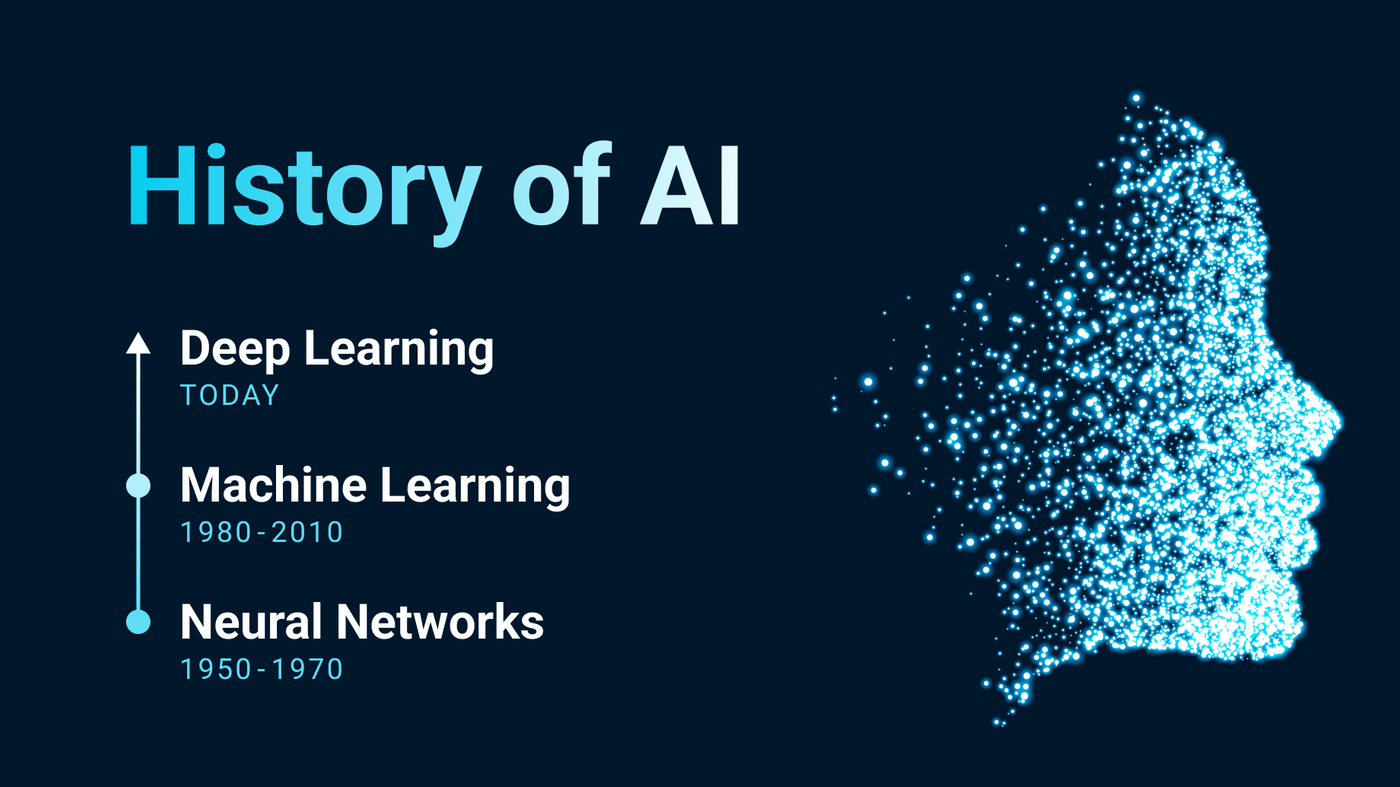
Small History of AI
Artificial Intelligence is around us every day. There are voice assistants, automated services, and it’s even used in the medical field. Still every new development surprises us and it seems like Artificial Intelligence is still a relatively new field.
This assumption is not entirely correct, because in 2023 AI has been around for over 70 years! In this article we will show you the evolution from simple algorithms to intelligent systems like OpenAI’s ChatGPT.
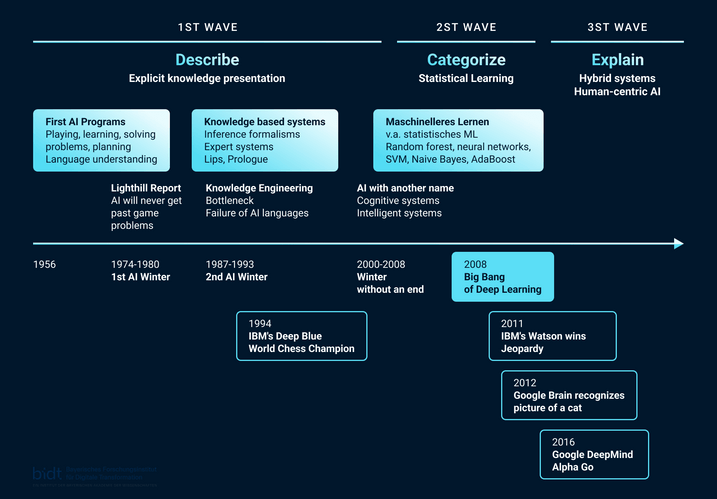
The different phases of AI.
The Imitation Game: 1950
The film “The Imitation Game” starring Benedict Cumberbatch and Keira Kneightley is about computer scientist Alan Turing and his life’s work. The method known as the “Turing Test” was developed in 1950.
The Turing Test is a procedure for testing whether a machine can imitate intelligent behavior so well that it cannot be distinguished by a human from another human. In this process, a text-based chat is used to test communication between a human and a machine without the human knowing whether he or she is talking to a machine or a human. If the machine can successfully fool the human, it is considered “intelligent.”
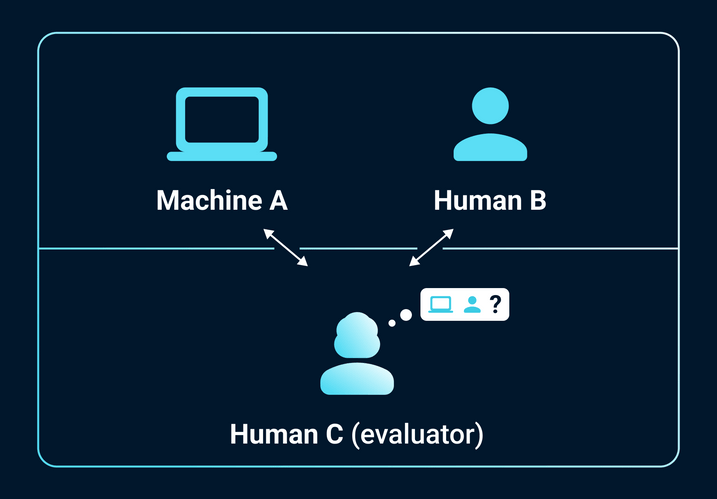
The Turing Test
The first neurocomputer: 1951
A year later, Marvin Minsky’s neurocomputer called Stochastic Neural Analog Reinforcement Computer (SNARC) simulated the behavior of laboratory rats and was thus able to find the fastest way out of a maze.
The Dartmouth Conference: 1956
Marvin Minsky did not only develop the first neurocomputer, but was also involved in the planning and implementation of the Dartmouth Conference. Together with John McCarthy, Nathaniel Rochester and Claude Shannon, he held the conference from June 19 to August 16, 1956. The Dartmouth Conference is regarded as the birth of Artificial Intelligence as an academic discipline.
The first learning computer: 1960
The Mark I computer was the first learning machine developed by the American computer scientist and psychologist Frank Rosenblatt. It is based on the so-called “trial and error” principle. Solution methods are tried out until the desired solution is found, whereby the possibility of failure is also accepted. Mark I is the basis for neural networks.
ELIZA: 1966
ELIZA went down in history as a computer program designed to show the possibilities of communication between humans and computers via natural language. Developed by Joseph Weizenbaum, she could be described today as the grandmother of Siri and Alexa.
Game program beats world champion: 1979
At the end of the 1970s, a machine prevailed against a world champion for the first time. The program developed by Hans Berliner beat the backgammon champion Luigi Villa.
Chess computer beats world champion: 1997
An important, or very well known, point in the development of AI is winning the chess tournament against Garri Kasparov. A year earlier, the Deep Blue computer had failed to win the duel, but after IBM improved it, it won against the world champion.
Voice Assistant Siri : 2011
For about ten years now, Apple’s voice assistant has been helping users navigate easily through the system. Siri answers questions and can also take on various tasks (e.g. setting an alarm clock).
Home Assistant Alexa: 2013
Alexa is a virtual AI assistant from Amazon. In addition to voice interaction and the execution of tasks (e. g. playing music, setting an alarm, etc.), it can also be connected to smart devices and thus participates in the automation of so-called “smart homes”.
ChatGPT: 2022
The company OpenAI started a big debate last year with the release of ChatGPT. ChatGPT is an advanced language model developed through machine learning and training with large text datasets. ChatGPT is specifically designed to interact with user:ins in a chat format and is continuously being improved to provide better support and answers to questions.
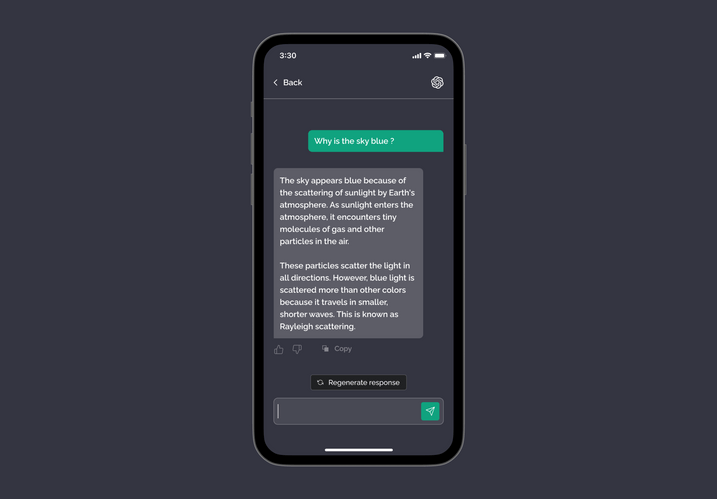
ChatGPT’s AI answers questions
Phases of AI
In summary, there have been three major phases of Artificial Intelligence. While the early days were primarily concerned with the development of neural networks, these evolved into machine learning (ML) between 1980 and 2010.
Meanwhile, we are in the phase of Deep Learning. This uses artificial neural networks to create algorithms on their own. The difference between Deep Learning and Machine Learning is that with ML programmers have to intervene to make changes.

Phases of Artificial Intelligence: Neural Networks, Machine Learning and Deep Learning
… And in the future?
As mentioned before, due to the enormous success of ChatGPT, there is a lot of discussion around AI. In the media, Artificial Intelligence has been an important topic almost every day since then. Most of the time, it is about the dangers it brings and the ethical handling of the systems.
But instead of focusing only on the negative scenarios that might occur, AI can also be used to your advantage. In customer service, for example, AI software can provide a huge improvement in customer satisfaction.
Use of AI in customer service
Artificial intelligence can now also be found in customer service in the form of Natural Language Understanding (NLU). The most important task of an NLU is to find out whether a particular query text can be assigned to an entry in the central knowledge database. In short, this is a text-to-text comparison, which is then followed by a decision.
In the e-commerce context, “I want my money back” matches “refund”, and this should be recognized by the software. However, it is also important that it recognizes when terms and requests do not match.
Basically, software that automatically answers customer queries must be able to understand the customer’s intentions and provide answers. The database contains entries of questions with their answers. The task of the AI is then to compare the questions with each other and determine a degree of similarity - if this is high enough, an answer is given.
Our personal AI journey
In this AI timeline, OMQ can place itself in the 2010s, because that’s where it all started for us. Today, in 2023, we have come very close to our goal: Good customer service for everyone. With our automated software, we ensure that both the customer experience and the work in the company are significantly improved.
Our central OMQ knowledge database stores all service knowledge and distributes it to all service channels. This allows questions to be asked anywhere on the website and then answered immediately in real time. Customers receive the same answer on all channels.
The AI behind our system understands customer requests and uses Natural Language Understanding (NLU) engines, which are based on modern neural network models and the client’s text comprehension: are adapted inside. Our system learns from the text itself and without the intervention of employees (self-supervised), as well as from the behaviour of employees and customers (unsupervised). The precise task of the NLU is to find out whether a particular query text can be assigned to an entry in the central OMQ knowledge database. So it does a text-to-text comparison and then makes a decision.
OMQ’s GPT-level chatbot
Our new GPT Chatbot has already been developed on a GPT basis. This means that fluid and, above all, very natural communication is ensured, with particularly individual responses being issued. GPT technology takes communication between companies and customers to a new level.
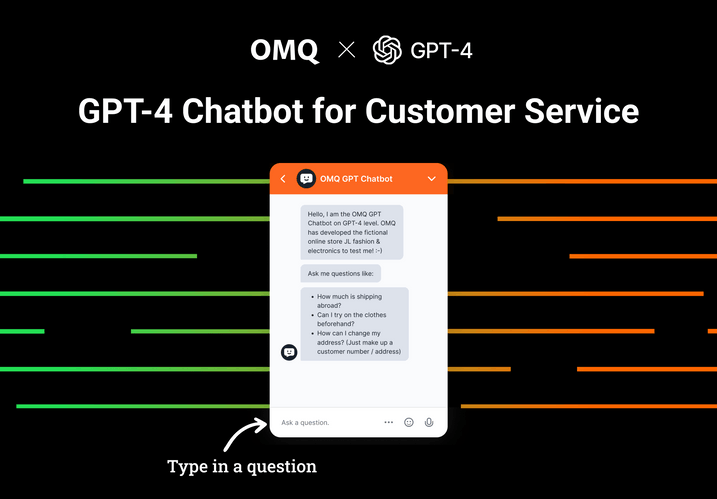
The new OMQ GPT Chatbot on GPT-4 / ChatGPT level
The latest AI developments can thus be integrated directly into customer service, where they ensure that customer satisfaction increases. Fast answers, up-to-date information and the execution of special support tasks are thus guaranteed.
Back to the Future… was yesterday
After our little look into the past, it is important to think in the present, instead of just thinking about the future. If you want to integrate the OMQ system now to provide better customer service in the future, you are welcome to do so. You can simply request a demo or contact us Ask questions. We are looking forward to seeing you!
